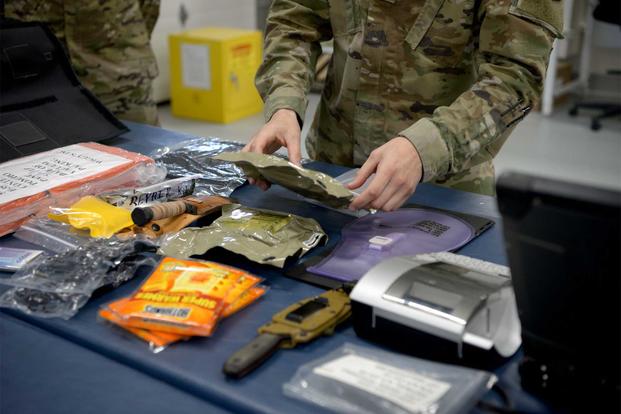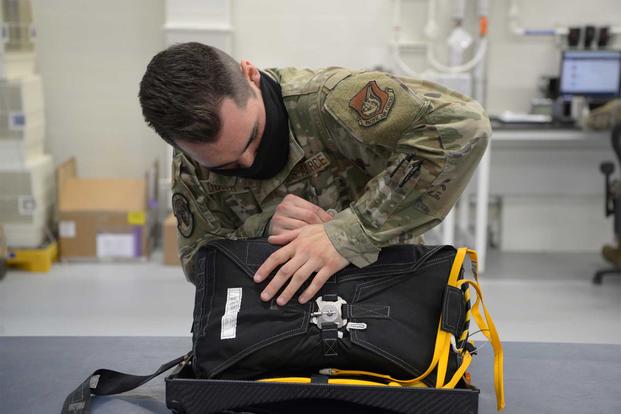Pilots flying the F-35 Joint Strike Fighter in Alaska are now getting cold weather gear in their ejection survival pack.
Summer survival packs, which are typically installed under the ejection seat, are being swapped out for arctic gear on F-35As at Eielson Air Force Base near Fairbanks. The packs include a knife for gathering food, a poncho to stay dry and flares to signal rescue teams, according to a recent release from the base.
Read Next: 'Shots in Arms Within 24 Hours:' Army General's Complex Vaccine Delivery Task Takes Shape
"Due to the smaller size of the seat we are limited on how many items we can pack in here," Staff Sgt. Ross Dugger, a 354th Operations Support Squadron aircrew flight equipment craftsman, said in a statement. Airmen from the flight equipment team began testing the winter gear last November.
"Over the years, we've worked with [survival, evasion, resistance and escape specialists] to develop this kit and decided what is the most essential equipment needed to survive," Dugger said.
Airmen from the egress and flight equipment teams check to ensure the pilot can safely eject with the survival pack in tow. The goal is to create and distribute the updated packs throughout the F-35A fleet. In the future, the same packs could also be used "by some partner nations who have F-35s in similar climates," the release said.

The latest update comes after the Air Force first modified its standard packs for fighter and bomber crews in 2018. While pilots typically have knives and a sidearm in their survival packs, that year, the service began adding a semi-automatic standoff rifle -- known as the GAU-5A Aircrew Self Defense Weapon -- to ejection survival packs for combat-coded ejection aircraft, or those assigned to a wartime mission.
Officials have said they are increasingly worried about crews entering contested environments in the next large-scale war with a near-peer adversary like Russia or China, and have even learned from current operating environments like Syria.
Citing expanded commercial and military activities from adversary nations in the Pacifc and the Arctic, the Air Force is in the process of building up its footprint of fighters at Eielson to support both regions.
While the base currently has six of the stealth fighters, a total of 54 conventional takeoff and landing versions of the F-35 are scheduled to arrive by December 2021. Eielson also hosts one of the Air Force's premier exercises, Red Flag Alaska, bringing pilots and ground troops together several times a year for the purpose of enhancing tactics and techniques.
"Alaska is poised to become a premier training range for the Pacific Air Forces, sister Defense Department services and international partners across the theater," said Lt. Col. James Christensen, the 356th Fighter Squadron commander at Eielson, in a separate June release. The 356th hosts the F-35 mission at the base.
Eielson also has KC-135 Stratotankers and F-16 Fighting Falcons, which often serve as aggressor air or "red air" training aircraft to simulate air-to-air battles with jet fighter counterparts, which occur within the state's training range -- the Joint Pacific Alaska Range Complex (JPARC).
"The JPARC provides unique opportunities for advanced training and tactics, integrating fifth-generation fighters and surface to air missile threats combined with the Air Force's best adversary replication," Christensen said.
With a complement of F-22 Raptors also stationed in the region, Alaska will be home to one of the highest concentrations of fifth-generation aircraft operating in the Pacific theater and near the Arctic circle by 2022, the Air Force has said.
-- Oriana Pawlyk can be reached at oriana.pawlyk@military.com. Follow her on Twitter at @oriana0214.
Related: The Air Force Is Gearing Up for More Action in the Arctic












